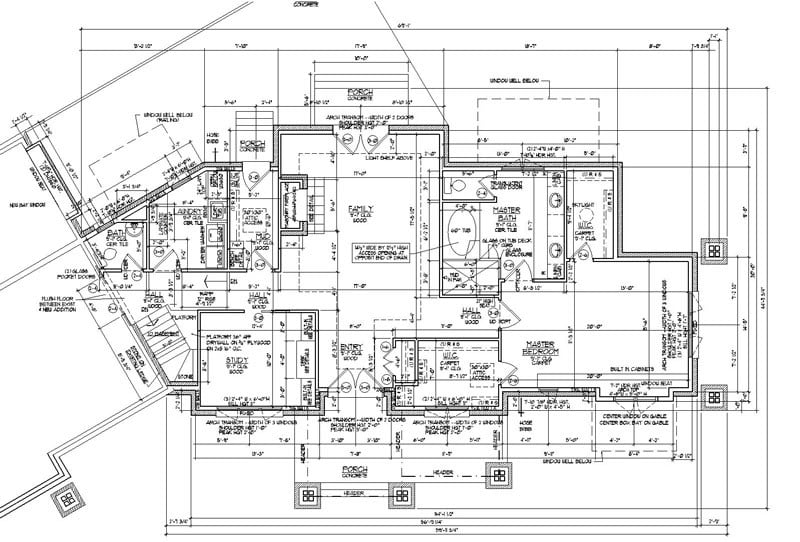
Are today’s architects doing substantial experiments in building houses?

The houses look almost uniform in design in the upper tier areas of this city of 23 million. Tall walls veil the view of the facades of these houses that are for Karachi’s high life. A lot of gray is visible with people tilting towards less use of paints.
The design lines are simpler, less complicated in Karachi compared to counterparts in Lahore and Islamabad. Architecture is definitely evolving in residential Karachi. But the design is controlled by the owner and not the architect. And the purpose of building these grand structures is less about building a home and more about what people will think, leaving Karachi’s architects disgruntled.
"Today’s architecture is just glamorous experiments but nothing substantial is being done. There is no serious architectural experiment in Pakistan presently. It is just gimmickry. People may have become savvier about hiring architects to design the house but a freehand is not given to the architect," says Mukhtar Husain, a senior architect who feels that most people build houses simply to show off. "It is an activity for noveau riche."
Renowned architect Shahid Abdulla’s views are aligned with Husain’s. "We as a nation are dirty. We don’t know how to live well and we don’t build houses with practicality and maintenance in mind. We build houses as showcases. Sprawling lawns are made to impress people but no one sits in them anymore," he says, explaining why architects are today preferring courtyards and paved areas, instead of lawns in a parched Karachi that receives very little rain.
Luckily, Karachi’s residences are easier to maintain. "Architecture in Karachi basically consists of reinforced concrete. There is no rain in Karachi which makes the maintenance much easier," says Habib Fida Ali, one of Pakistan’s most famous architects and the man who designed LUMS.
He discusses architecture with zeal, with Zaha Hadid being mentioned as a great personality and Fida Ali’s friend.
While the world celebrates the great Ms Hadid’s work and pays her tributes, Husain sees Pakistan’s architectural scene as pretty stagnant. "No Pakistani architect gets any international awards. It’s not that Pakistani architects are not capable of better works but there is not enough opportunity to do better work when the owner dictates what we design. The signature work of any architect is no longer recognisable."
For architects like Abdulla, economy and nature play a very important part of the design. "My focus when designing is to make a house economical. When a proper architect is not used, the focus of owners is that the house should not appear a poor man’s house. It’s like giving a child makeup to beautify; overkill of materials makes the house less becoming," he says.
Houses designed by Abdulla are known to be very different. "We use cement, less of marble but try and use more stone. Nature is very important to me. My houses are easy maintenance. On a stone floor falling leaves still look good. A house should look like a home. It should look lived in and after twenty years it should look prettier when the trees you planted when you built the house are now all grown up. Natural light and plants are never old fashioned," he says, expressing displeasure over the trend of imported trees. "It’s time to go back to indigenous and fruit trees. I am very conscious of the environment-friendly aspect of design. I like to create small water bodies."
Read also: "We have not caught the threads so far"
For the more aware house owners, like Humera Kamran, the element of nature is supremely important, as is practicality. "I did not want a house that I become a servant to due to maintenance needs. So practicality was very important to me," she says. She has recently moved into her new home which is a labour of love for her. "Three elements are very important in my house; light, air and plantation. At any given time during the day, I don’t need to switch on a light at any place in my house. I had electricity conservation in my mind and wanted to stay as close to nature as possible. The patio in the centre of the house is our hub. That is where we sit in the evenings surrounded by plants. I have not used any grills in my house. We have used tempered glass."
Abdulla feels upbeat when asked to compare the architectural scene in Karachi and other urban centres. "Karachi’s architecture is evolving very well. Lahore as a city still cannot appreciate simple architecture. Karachiites are more practical," he says, mentioning that one positive change is that architects like himself take it upon themselves to use less paint. "Look at the Indus Valley School. I left it in concrete block and twenty four years later it still looks good."
But Husain does not see any difference in the urban architecture of Karachi, Lahore, and Islamabad. "The same trends are being followed everywhere. It’s just that in Karachi, due to security reasons, the walls are very high so the street fronts look very drab because facades of houses are no longer visible though people still spend money on them. Yes, there are more sun roofs but that is not for an environmental concern, but is just another trend," he says, adding that environmental sustainability is not a concern for clients which is very frustrating for the architect. "My advice to people building a house is that don’t just put in your money but also put in your mind."